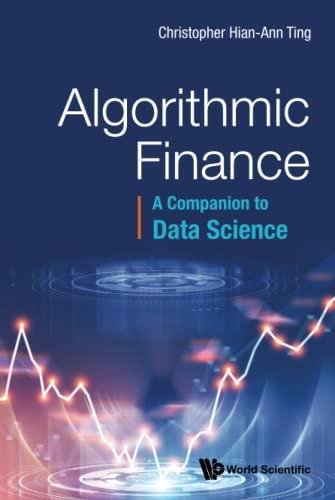Question
151 Fill in the spreadsheet below and answer the following questions. Calculate answers to three decimal places. a. Calculate returns (Rs) and return relatives (RRs)
151 Fill in the spreadsheet below and answer the following questions. Calculate answers to three decimal places.
a. Calculate returns (Rs) and return relatives (RRs) for McDonalds for the 10 years 20012010 using the data provided below. Place Rs in Column E and RRs in Column F. Also, calculate the dividend yield for each year using dividend for a given year divided by price for the previous year.
b. What was the dividend yield on McDonalds for 2010, based on the closing price for 2009?
c. What was the arithmetic average dividend yield for this 10year period? (Note: calculate the dividend yield for each year using the closing price for the previous year (2001 dividend and 2000 price, 2002 dividend and 2001 price, etc.) and then determine the 10year arithmetic average).
d. Calculate the arithmetic mean and geometric mean R for McDonalds for this 10year period using Excel functions. State answers as a percentage.
e. Calculate the cumulative wealth for McDonalds for this 10year period, assuming:
i. $1,000 invested at the beginning of the 10 years ii. $10,000 invested at the beginning of the 10 years
f. The geometric mean return for the S&P 500 for this
10year period was 1.014 percent. Calculate the cumulative wealth for the S&P 500 for this 10year period, assuming $1 invested at the beginning.
g. i.Calculate the standard deviation of these 10 years of returns for McDonalds using the Excel function STDEV. Note: for this calculation, you can use either Rs or RRs.
ii. Based on the information in Table 66, and assuming the risk information in this table applies to the 10year period being considered here, is McDonalds more risky than the S&P 500, or less risky?
h. What is the biggest single factor in explaining McDonalds returns for 2001 and
2002?
i. For an investor who bought McDonalds stock on January 1, 2005, and held it to December 31, 2010, at what compound annual average rate of return did this investment in the stock grow? State your answer as a compound annual average percentage rate of return.
j. Assume an investor invested $5,000 in McDonalds stock on January 1, 2001, and held it for 20 years. Also assume that the geometric mean for these 20 years is the same as the geometric mean for the 10 years 20012010. Including the initial investment, how much money would the investor have at the end of the 20 years? In other words, what is the cumulative wealth from this investment given an initial investment of $5,000?
k. Calculate the compound annual average rate of return on McDonalds stock for the years 20012003. State your answer as a compound annual average percent rate of return.
l. Assume you purchased 100 shares of McDonalds stock on January 1, 2007, the year before the great financial crisis of 2008. Calculate the cumulative wealth of this position (which includes the starting amount) at the close of business on December 31, 2010. Ignore any brokerage costs.
m. Assume that over the next five years the returns on the S&P 500 are 6 percent, 2.5 percent, 4 percent, 5.2 percent, and 3.1 percent.
a. What will be the cumulative wealth per dollar invested in this index? b. At what compound annual rate of return did your money grow if you invested
in this index at the start of the five years?
n. Assume that the information generated above is all the information you have about McDonalds rate of return. What would be the best estimate of the return for McDonalds for 2011? What was the actual return?
Clos Price Div R RR DivY
2010 76.76 2.26
2009 62.44 2.05
2008 62.19 1.63
2007 57.27 1.5
2006 44.33 1
2005 33.72 0.67
2004 32.06 0.55
2003 24.83 0.4
2002 15.75 0.24
2001 26.6 0.23
2000 34
Step by Step Solution
There are 3 Steps involved in it
Step: 1

Get Instant Access to Expert-Tailored Solutions
See step-by-step solutions with expert insights and AI powered tools for academic success
Step: 2

Step: 3

Ace Your Homework with AI
Get the answers you need in no time with our AI-driven, step-by-step assistance
Get Started


